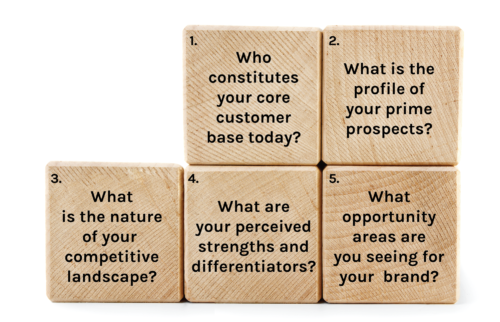Foundational insights can be the lifeblood of an organization, as they guide brand strategy and help determine your roadmap for anywhere from three to five years (sometimes more). As such, it’s critical that these insights come from the right people. This is where many brands face a challenge: How wide should they cast the net to capture meaningful, impactful foundational insights?
In our experience, brand teams tend to fall into two camps:
- Camp A: Those who want to keep their options open and not limit themselves by looking too specifically at a particular target (or set of targets)
- Camp B: Those who feel they have a very specific target audience and don’t want to muddy the waters by having input from people who fall outside of this target potentially corrupt their learnings
So which camp is right? Which one should you align yourself with? On one hand, no brand wants to leave opportunity on the table and miss out on some key insights that might come from taking a broad view. On the other, if a brand takes its lead from people who may not ultimately represent the true driving force behind its growth it risks getting pointed in the wrong direction.
Based on what we’ve seen, through years of implementing segmentation research that serves as the foundation by which our clients build their strategies, here are 5 key questions to explore in order to determine what is right for you – broad or narrow:

1. Who constitutes your core customer base today?
By taking an unvarnished look at who is doing business with you today, you can begin to get a good picture of how broad a reach your brand has right now. Of course, that may sound obvious. But what’s not always obvious is determining whether this core customer base aligns with how your internal teams see your brand and with the vision you have for your brand going forward. It’s critical that you align yourselves behind who your core audience is, be honest about it, and then be honest about whether you can reasonably expand beyond this audience. If your customer base is pretty heterogenous, and if your team agrees that this is the type of audience you want to continue to pursue, then broad may be the way to go. If you have a very homogenous audience and this is sensible to your team, then narrow may be the way to go. If there is conflict between reality and perceptions of what should be, then it’s worthwhile to take a pause, bring the key stakeholders together, and create alignment before investing in foundational insights.
2. What is the profile of your prime prospects?
Much like with your core customer base, it’s important to see where interest lies. Are you seeing some potential among a broad-based group of people, or is there a very clear cluster that is expressing positive interest in your brand? This can be determined with some simple, quick turn research. Integrating what you learn here, with what you already know about your core customers, you can begin to paint a very clear picture of how wide to cast your net in order to build your foundation. You should also factor in whether the team would like to find ways to expand beyond these prime prospects. If so, a broader view is needed. If not, then keep it as narrow as your prospect and customer profiles dictate.
3. What is the nature of your competitive landscape?
Several factors need to be explored in this area: How fragmented the market is, what your market share looks like today, whether you’re the leader, whether a competitor is the leader, how entrenched the leading brand is, whether there are weaknesses to exploit, how loyal customers tend to be, etc. Depending on what you know about the landscape, with respect to these key questions, you can begin to determine whether it’s worthwhile to take a broad or more narrow approach to gathering foundational insights. In certain contexts, looking broadly is wise because of the potential in the landscape. In others, going too broad will leave you with information that is not actionable or not likely to lead to an ROI.
No brand wants to leave opportunity on the table and miss out on some key insights that might come from taking a broad view. On the other, if a brand takes its lead from people who may not ultimately represent the true driving force behind its growth it risks getting pointed in the wrong direction.”
4. What are your perceived strengths and differentiators?
As you evaluate the competitive landscape, you can decipher the strengths and differentiators that your brand can lean on. Based on how customers and prospects line up around these strengths and differentiators, you can get clarity about whether a broader or more narrow approach is best.
5. What opportunity areas are you seeing for your brand?
Finally, are you seeing opportunities that are expansive for your brand and can allow you to branch off in a range of areas, or are you facing more limited opportunities that require you to double down on the assets and benefits you offer today? Taking a hard, honest look at the opportunities you have will help you determine the right approach. Importantly, gauging the size of these opportunity areas, even in a rough manner, will give you the guidance you need to determine how wide of a net you should cast to capture foundational information.
Take all these together, and you can paint a pretty clear picture as to how broad a focus your brand should take in seeking out market-driven foundational insights. This will inform where you invest your resources to gather the information that will lead to a more precise targeting strategy, messaging and positioning platform, innovation pipeline, and sales strategy.
Want to discuss how broad or narrow to take your foundational work?




